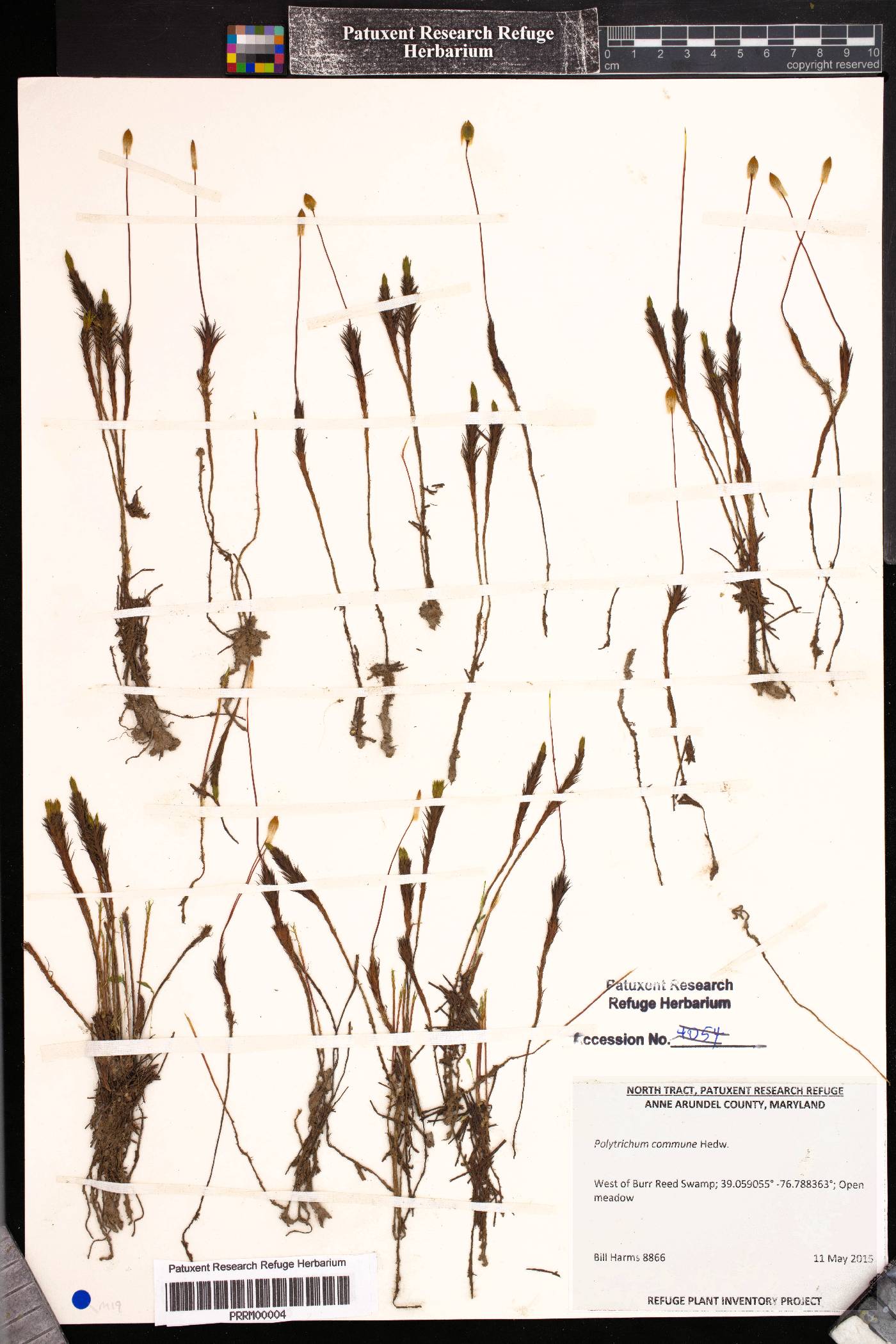
|
Polytrichaceae |
|
|
Plants small, medium to large, densely to loosely caespitose or scattered among other bryophytes, rarely with individual plants scattered on a persistent protonema. Stems erect, acrocarpous, from a ± developed underground rhizome, simple or rarely branched, bracteate proximally, grading gradually or abruptly to mature leaves. Leaves various, with a chartaceous, sheathing base and a divergent, firm-textured blade (polytrichoid), or the whole leaf membranous and sheath not or weakly differentiated, the blade rarely transversely undulate, crisped and contorted when dry; adaxial surface of blade with numerous closely packed longitudinal photosynthetic lamellae across most of the blade, the marginal lamina narrow, or the lamellae restricted to the costa, flanked by a broad, 1 (rarely 2)-stratose lamina, rarely with abaxial lamellae; margins 1(-3)-stratose, entire, denticulate, serrate, or toothed (in Atrichum bordered by linear, thick-walled cells); costa narrow in basal portion, in the blade abruptly broadened and diffuse, smooth or toothed adaxially, rarely with abaxial lamellae, in cross section with a prominent arc of large diameter guide cells and an abaxial stereid band; lamellae entire, finely serrulate, crenulate, or coarsely serrate, the free margin smooth or cuticular-papillose, the marginal cells in cross-section undifferentiated or sharply distinct in size and/or shape from those beneath; transition in areolation from sheath to blade gradual or abrupt, with 'hinge-tissue' at the shoulders (except Atrichum and Psilopilum); cells of back of costa (or cells of the membranous lamina) typically in longitudinal rows, ± isodiametric to transversely elongate-hexagonal. Vegetative reproduction none, or by proliferation of an underground rhizome. Sexual condition dioicous or rarely monoicous; male inflorescence indeterminate, innovating from the center and continuing the growth of the stem, often several successive perigonia per shoot; female inflorescence terminal, perichaetial leaves long-sheathing or not much differentiated. Seta solitary or rarely several from the same perichaetium. Capsule obtusely to sharply (2-)4(-6)-angled, with indistinct longitudinal angles or ridges, or terete; hypophysis tapering and indistinct or delimited by a constriction at base of capsule; exothecium smooth, mammillose, or scabrous; stomata present (absent in Atrichum and Pogonatum); peristome The Polytrichaceae are widely distributed in all climatic zones except the lowland tropics and include many large, common, and familiar North American mosses. These 'hair-cap mosses' have no close living relatives, and have a long (but disjunctive) fossil record (Eopolytrichum) from the Late Cretaceous of Georgia, United States (A. S. Konopka et al. 1997). The family is remarkable for the structural complexity of both gametophyte and sporophyte found in many of its members. The stems of robust taxa (Polytrichum) have a conspicuous central strand composed of hydrome and leptome, and traces extending into the leaves; in other genera the central strand is weak and indistinct. The following descriptions use the shorthand term 'polytrichoid' for taxa with a growth form and leaves like those of Polytrichum. The best analogy to the polytrichoid leaf is the grass leaf, with a clear distinction between a sheathing base and divergent blade. Typically a wedge-shaped group of transversely elongate, incrassate cells ('hinge tissue') is present at the shoulders or just above. Most polytrichoid taxa have a hyaline-margined sheath, with a sharply defined border of thin-walled, decolorate cells. The leaves of Atrichum have a slender costa and a broad, membranous lamina. In Bartramiopsis and Lyellia, however, the lamellae are restricted to the 'costa' and the broad 'lamina' is 2-stratose. In the polytrichoid leaf the distinction between costa and lamina becomes blurred. The conducting strands are confined to a median band, flanked by an ambiguous zone bearing closely packed lamellae but only a few cells in thickness, and a narrow, usually 1-stratose marginal lamina. Gary L. Smith (1971) suggested that lamellae originally covered the adaxial surface of the leaf, and the broad membranous lamina developed as conducting strands and lamellae were restricted to the median portion. As demonstrated by S. O. Lindberg (1868) the form of the marginal cells of the lamellae is often sufficient to distinguish between species of Polytrichaceae. Free-hand sections with a razor blade are adequate in most cases. Sections should be made from ordinary vegetative leaves, in the middle 1/3 (or in polytrichoid leaves, midway between the tip and the base of the blade). Lengths of lamellae should also be scraped from the leaves to be viewed in profile. Median cells of the lamina are best measured individually. The leaf cells are typical |
|


